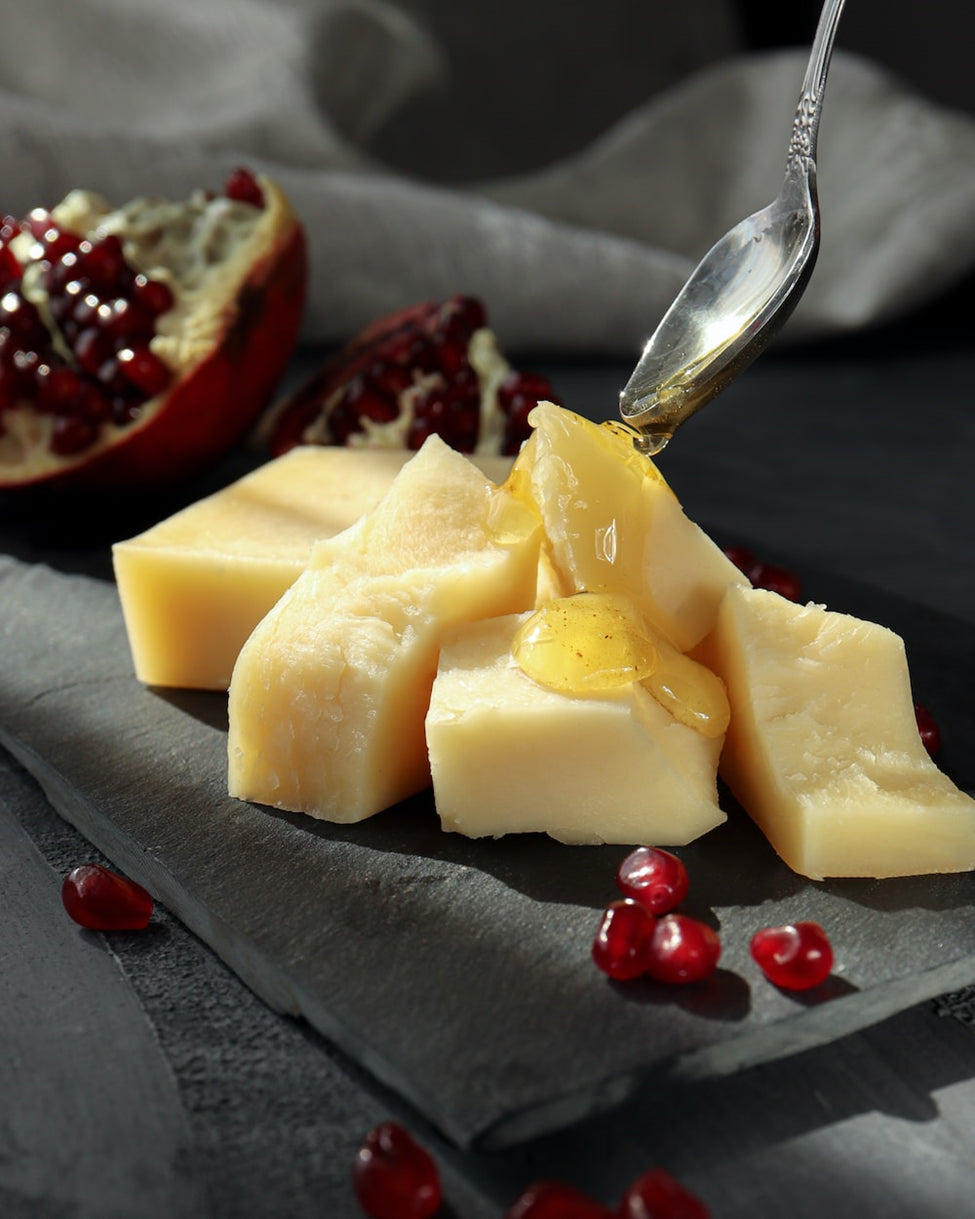That delicious Italian cheese has been tempting palates for ages. Thanks to its long tradition and exceptional quality, Italian cheese has become a global culinary standard. Italian cheese can be found all over the country, from the charming alleyways of Florence to the crowded marketplaces of Rome. Italian cheese is a classic that will always stay in style, whether you're enjoying it shredded over spaghetti or dipped in tomato sauce. Origini Italian Market is the only place to get freshly made, delicious ones.
Get set to take your taste buds on an unforgettable adventure with authentic Italian cheese. If you're a foodie or enjoy trying new foods, come and learn everything you need to know about Italian cheese with us!
What type of culinary item is cheese?
Cheese is a type of curdled milk that can be produced from the milk of cows, goats, sheep, or even humans. Curds are formed when milk is treated with an acidic substance like vinegar or lemon juice, which causes the milk's proteins to congeal. Separating the curds from the milk, salting them, and aging them for a time is the next step in making cheese. Cheese is a common component in a broad range of dishes due to its versatility in structure and taste.
The Origin of Cheese
Cheesemaking has been traced back to around 6000 BCE when earthenware vessels and filters were discovered in historical digs in ancient Mesopotamia (Iraq). The ancient Egyptians and Greeks had significant cheesemaking traditions. The Romans are credited with perfecting many kinds of cheese still enjoyed today, such as Parmesan and ricotta.
Despite its uncertain origins, cheese has become a globally popular delicacy. Now people make it traditionally and with contemporary technology.
The History
Italian cheese has a long and storied past from the old Romans, avid cheesemakers. In contrast, modern Italian cheese manufacturing and usage can be traced back to the Middle Ages. During this period in Italy, cheesemaking methods were refined by churches and other holy organizations.
Cheese-making customs and types vary widely across Italy. It often represents differences in topography, temperature, and agricultural practices. Northern Italy's hilly areas produce matured cheeses like Parmigiano-Reggiano and Grana Padano. At the same time, southern Italy's warmer climate is ideal for creating homemade cheeses like mozzarella and ricotta.
Italian cheese remains an integral part of Italian food and culture. It is frequently used as a component in meals as diverse as pizza, spaghetti, and pasta.
The ingredients
Milk, starting culture, rennet, and salt are the standard components for making Italian cheese. Cheese relies on milk, which can come from any number of mammalian sources besides just cows. Cheese gets its signature taste from the ripening process. It begins when a starting culture—a bacteria—is introduced to the milk. The milk is then treated with rennet, which causes the curds and whey to separate. Last, salt is commonly added to cheese to improve its taste and extend its shelf life. The flavor and fragrance of some Italian cheeses can be enhanced by including herbs, seasonings, or even truffles.
The Sizing
Italian cheese is available in various sizes depending on the sort of cheese and its use. Large wheels or slabs of some Italian cheeses, like Parmigiano-Reggiano or Pecorino Romano, can weigh up to 80 pounds. Grating or shaving these big cheeses on demand is common in business kitchens and eateries. Other Italian cheeses like mozzarella and provolone are more frequently used in salads and sandwiches. They are then offered in smaller portions, such as spheres or logs. Some Italian cheeses are also available pre-shredded or chopped, which can be helpful for busy house chefs. Different kinds of Italian cheese have distinct qualities thanks to regional differences in size and form.
How to Spot Superb Cheese
Italian cheese can be identified by looking for several specific characteristics. First, ensure the cheese was produced in Italy by looking for the "Denominazione di Origine Protetta" (DOP) marking. Because of this marking, you can trust that you receive a genuine, high-quality item. Next, take a close look at the cheese and feel its substance. A fine Italian cheese will have a uniform hue and structure and won't be desiccated or brittle. Besides, the cheese ought to be fragrant without being overwhelming. The final step is to check the cheese's aroma. A great Italian cheese will have a depth of taste that combines spicy, sweet, and sour in just the right proportions. The cheese may not be the best quality, with an unpleasant flavor. If you keep these things in mind, you'll be able to identify a high-quality Italian cheese and appreciate its taste.
The Taste
Italian cheese can have various flavors based on the variety and region. Still, it has a deep complexity that strikes a nice balance between salt, sweet, and sour. Italian cheeses are known for their extraordinary taste because they are prepared using time-honored techniques and premium ingredients. Whereas Parmigiano-Reggiano is earthy and salted with a faintly sweet aftertaste. Also, Gorgonzola is piquant and acidic, with a smooth mouthfeel that balances it out. Mozzarella cheese has a delicate, creamy flavor that works well in flavorful recipes. No matter the variety, a great Italian cheese should have a taste that stands out and is a credit to the cheesemaker's hard work and devotion.
The perfect Season to try Italian cheese
All seasons are appropriate for eating Italian cheese, which is tasty and flexible. Yet, some Italian cheeses are at their peak of quality and availability during specific times of the year. Tender cheeses like ricotta and mozzarella, for instance, have a mild taste and a velvety texture that go with spring's veggies and flowers. Salads, spaghetti recipes, and veggies go with the cheese, like Parmigiano-Reggiano and Pecorino Romano in the summer. Gorgonzola and Taleggio, two opulent kinds of cheese, are perfect for autumn's soups and roasts. During the colder months, Fontina and Asiago cheeses are welcome additions to hearty winter meals. Ultimately, the best time to sample Italian cheese is whenever you and the cheese you want to try are both in the mood for it.
Conclusion
Italian cheese, in conclusion, is a culinary masterpiece. It's no surprise that Italian cheese is so popular around the globe. It has a long and storied past, uses ancient techniques, and boasts extraordinary taste. From the sharp flavor of Parmigiano-Reggiano to the buttery richness of fresh mozzarella, it's impossible to pick a favorite Italian cheese.
Indulge in the heavenly taste of Italian cheese, perfect on its own or as a mouthwatering addition to any dish. Now as you know everything you need to know about Italian cheese, you can please your cravings with its rich and delicious flavors that will leave your senses wanting more!
https://www.organicvalley.coop/blog/what-is-cheese/
https://www.kitchenstories.com/en/stories/the-complete-guide-to-italian-cheeses-and-the-13-kinds-to-know

